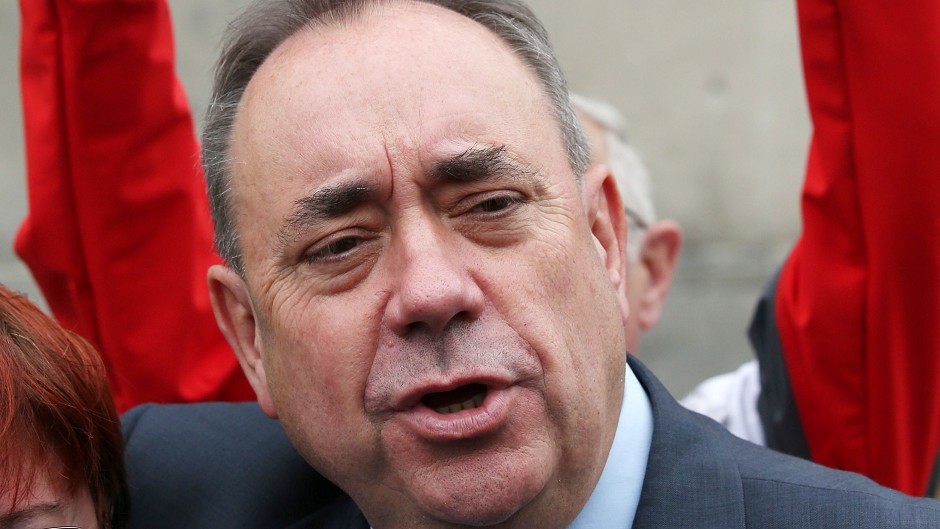Alex Salmond’s independence dream is over – and now this most committed of campaigners has decided to stand down as Scotland’s First Minister and Scottish National Party (SNP) leader.
It was clear that his failure to secure the win in the referendum would give rise to suggestions that the 59-year-old had taken the SNP as far as he could, and he took swift action to pave the way for a change.
He said he believed party, parliament and country would benefit from new leadership to take the devolution process forward.
He will remain active in politics, though, offering to continue to serve as Member of the Scottish Parliament for Aberdeenshire East.
While a majority of Scotland disagreed with his independence vision, few would dispute his abilities as a political tactician, having led the SNP to a stunning victory in the 2011 Scottish Parliament election, paving the way for the historic referendum.
Born in Linlithgow in 1954, Alexander Elliot Anderson Salmond was educated at Linlithgow Academy and St Andrew’s University, where he first joined the SNP.
Graduating with a degree in economics and history, he worked as an economist for both the Government Economic Service and the Royal Bank of Scotland before being elected as an MP for the Banff and Buchan constituency in 1987.
His election at Westminster followed a turbulent period for the SNP, which saw its number of seats fall from 11 to two in the 1979 general election.
As a young and brash newcomer, Mr Salmond played a role in the breakaway faction of the party known as the “79 Group” which sought to take a more left-wing stance.
His brief expulsion as a result did not hinder his advancement within the party in the long-term, with his election to leader coming in 1990.
With the creation of the Scottish Parliament in 1999, Mr Salmond went on to serve as leader of the opposition at Holyrood, while retaining his seat at Westminster.
He stood down as SNP leader in 2000 and left the Scottish Parliament in 2001.
Returning as leader in 2004, he guided the SNP to a narrow Scottish election win in 2007 and then led a minority government as he became Scotland’s first SNP First Minister, with his wife Moira by his side.
That success was superseded in the 2011 election, when Mr Salmond led his party to an unprecedented victory, with a crushing defeat of its main rival and pre-election poll leaders Labour.
The majority win was even more impressive considering the voting system at Holyrood is essentially aimed at preventing such a result.
It meant the SNP’s manifesto pledge to hold an independence referendum could be delivered.
Mr Salmond signed the Edinburgh Agreement with David Cameron on October 15 2012, setting out the terms of the referendum.
Despite attempts by some in the Yes camp to move the focus away from him, Mr Salmond was seen across the UK – and the wider world – as synonymous with the Scottish independence movement.
During his time as First Minister he has survived controversies – Justice Secretary Kenny MacAskill’s decision to free Lockerbie bomber Abdelbaset al-Megrahi on compassionate grounds, his handling of planning for Donald Trump’s Scottish golf course, and his dealings with newspaper boss Rupert Murdoch to name a few.
But over the past year, his White Paper on independence has been the focus of criticism from his unionist rivals, most notably over his currency plans, oil revenue projections and a pledge to transform childcare – all defended with bullish rebuttal.
Yet a more measured Mr Salmond appeared in the final stages of the campaign, with a pared-back performance during the first televised debate with Better Together leader Alistair Darling.
A last-minute rally in the polls following Mr Salmond’s barnstorming return to form in the second television debate failed to translate into majority support for independence.
Alex Salmond steps down after referendum
By
Calum Ross
